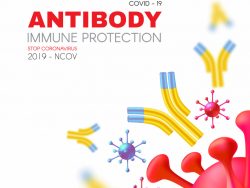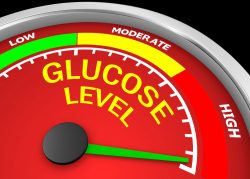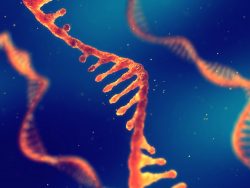Healthy Lifestyle for Cardiovascular Health also Promotes Good Eye Health
 A new study has shown that ideal cardiovascular health which is typically indicative of a healthy lifestyle, was link with decreased odds of a person developing ocular diseases and especially diabetic retinopathy. The findings suggest that interventions to prevent cardiovascular diseases may also show promise in preventing diseases of the eye.
A new study has shown that ideal cardiovascular health which is typically indicative of a healthy lifestyle, was link with decreased odds of a person developing ocular diseases and especially diabetic retinopathy. The findings suggest that interventions to prevent cardiovascular diseases may also show promise in preventing diseases of the eye.
About 2.2 billion people worldwide suffer from ocular diseases which can lead to vision impairment and blindness. About one half of these cases could have been prevented. The leading causes of blindness or vision impairment are age related macular degeneration, cataract, diabetic retinopathy, and glaucoma.
Previous studies have founds associations between eye diseases and individual lifestyle factors such as obesity, smoking, or hypertension. It is well known that these particular metrics of ideal cardiovascular health do not work alone and may interact additively to result in diseases. Prior to the recent research, no other research has comprehensively evaluated the association of all of the metrics of ideal cardiovascular health with ocular diseases.
Most diseases of the eye show few symptoms at early stages, and a lot of people may not seek medical care despite the fact that there are readily available treatments. A recent online nationwide survey that consisted of all ethnic and racial groups in the U. S., showed that 88% of the 2,044 participants considered good vision to be very important to overall health. 47% of these participants rated losing their vision as the worst disease that could ever affect them. Surprisingly, 25% did not have any knowledge in regards to ocular diseases and their risk factors.
The study shows that following healthy lifestyle and behavioral habits can all contribute to good cardiovascular health as assessed by following the American Heart Association’s prescription for health metric known as Life’s Simple Seven (LS7). LS7 is based on the status of seven cardiovascular disease factors which are not smoking, healthy diet, regular physical activity, maintaining normal weight, controlling blood pressure, controlling cholesterol and controlling blood glucose levels.
Practicing these LS7 healthy lifestyles together was found to be associated with decreased odds for age related macular degeneration, cataract, diabetic retinopathy, and glaucoma. People with optimal cardiovascular health had 97% lower odds for diabetic retinopathy when compared to people with inadequate cardiovascular health.
Researchers evaluated data from 6,118 adults aged 40 or older who took part in the 2005-2008 National Health and Nutrition Examination Survey. The average age was 57 and 53% of whom were female. A one unit increase in LS7 scores was associated with reduced odds of age related macular degeneration, glaucoma and diabetic retinopathy.
Overall it is believed that the primary prevention and early detection of eye diseases are important when considering that over half of all deaths from ocular diseases and cardiovascular diseases are known to be preventable.
Considering the significant overlap of the risk factors of ocular and cardiovascular diseases, the research team recommends that screening for ocular diseases be incorporated into existing population based and clinical screenings for cardiovascular diseases. The hope is that the studies findings will encourage people to adhere to healthy lifestyle choices in order to prevent these age related disease while at the same time leading to increased collaborations between optometrists, ophthalmologists and cardiologists in order to better prevent cardiovascular and ocular diseases.
To view the original scientific study click below
The Association of Ideal Cardiovascular Health and Ocular Diseases Among US Adults.



 According to a new brain imaging study, when a person’s weight goes up, all regions of the brain will go down in blood flow and activity. The study has revealed that being overweight or obese seriously impacts activity in the brain and increases the risk for Alzheimer’s Disease in addition to a variety of other cognitive and psychiatric conditions.
According to a new brain imaging study, when a person’s weight goes up, all regions of the brain will go down in blood flow and activity. The study has revealed that being overweight or obese seriously impacts activity in the brain and increases the risk for Alzheimer’s Disease in addition to a variety of other cognitive and psychiatric conditions. Investing time in education during childhood and early adulthood not only expands career opportunities and can provide progressively higher salaries, but it also conveys benefits to longevity and health. It can also boost the cognitive skills people can develop earlier in life, pushing back the time at which age related dementia will begin to impact a person’s ability to care for themselves.
Investing time in education during childhood and early adulthood not only expands career opportunities and can provide progressively higher salaries, but it also conveys benefits to longevity and health. It can also boost the cognitive skills people can develop earlier in life, pushing back the time at which age related dementia will begin to impact a person’s ability to care for themselves. Researchers at the Univ. of CA San Diego School of Medicine report that they have successfully implanted certain grafts of neural stem cells straight into spinal cord damage in mice. They then documented how the grafts mulitplied and filled the site of injury, mimicking the mice’s current neuronal network.
Researchers at the Univ. of CA San Diego School of Medicine report that they have successfully implanted certain grafts of neural stem cells straight into spinal cord damage in mice. They then documented how the grafts mulitplied and filled the site of injury, mimicking the mice’s current neuronal network.  Due to the millions of cases of COVID-19 reported worldwide, people are looking to antibody tests to see whether they have been exposed to the coronavirus that leads to the disease. Questions have arisen in regards to what exactly are antibodies and why are they important? People wonder if they have them are they immune to COVID-19 and if not why? Can a person be injected with antibodies as a treatment or preventative?
Due to the millions of cases of COVID-19 reported worldwide, people are looking to antibody tests to see whether they have been exposed to the coronavirus that leads to the disease. Questions have arisen in regards to what exactly are antibodies and why are they important? People wonder if they have them are they immune to COVID-19 and if not why? Can a person be injected with antibodies as a treatment or preventative? A recent study from the Colorado State University has discovered that physical stress at one’s job could possiby be associated with poorer memory and faster brain aging. This study is the first evidence that links occupational stress to accelerated brain and cognitive aging.
A recent study from the Colorado State University has discovered that physical stress at one’s job could possiby be associated with poorer memory and faster brain aging. This study is the first evidence that links occupational stress to accelerated brain and cognitive aging. Researchers have linked a diet high in protein and especially high in plant proteins to a lower risk of death from any cause. The team says their findings support current dietary recommendations for people to increase their consumption of plant proteins in the general population.
Researchers have linked a diet high in protein and especially high in plant proteins to a lower risk of death from any cause. The team says their findings support current dietary recommendations for people to increase their consumption of plant proteins in the general population. Doctors encourage people to engage in regular aerobic exercise which is important for achieving and maintaining better overall health. A new study has however, found out that some benefits of aerobic exercise might be influenced by higher than normal levels of blood sugar which is a condition known as hyperglycemia.
Doctors encourage people to engage in regular aerobic exercise which is important for achieving and maintaining better overall health. A new study has however, found out that some benefits of aerobic exercise might be influenced by higher than normal levels of blood sugar which is a condition known as hyperglycemia. New findings from the University of Colorado Boulder may lead to new therapies for a variety of diseases including heart abnormalities and cancer. The study led researchers to becoming one step closer to answering the fundamental question as to how a stem cell, which is the raw material with which our tissue cells and organs are made of, knows what to become?
New findings from the University of Colorado Boulder may lead to new therapies for a variety of diseases including heart abnormalities and cancer. The study led researchers to becoming one step closer to answering the fundamental question as to how a stem cell, which is the raw material with which our tissue cells and organs are made of, knows what to become? Plastic surgeons have for some time been using stem cells to treat aging and sun damaged skin with good results. However, it has not been exactly how these treatments work to rejuvenate “protoaged” skin on the face. A new study has found that within a few weeks, stem cell treatments will eliminate the sun damaged elastin network and replace them with normal undamaged structures and tissues.
Plastic surgeons have for some time been using stem cells to treat aging and sun damaged skin with good results. However, it has not been exactly how these treatments work to rejuvenate “protoaged” skin on the face. A new study has found that within a few weeks, stem cell treatments will eliminate the sun damaged elastin network and replace them with normal undamaged structures and tissues.